Distinguish between four species of Painted Turtles like an expert and provide each one with the best care and maintenance from the tips in this guide!

Introduction
Let’s explore one of the most vibrant and popular species of rare aquarium pets: Chrysemys picta, popularly called the Painted Turtle. If you’re looking for a semi-aquatic turtle species that will physically stand out without stressing you out with its maintenance, then you’ve hit the jackpot.
Chrysemys picta requires minimal hands-on care because it’s adaptable to different environments. Its lifestyle of shuttling between land and water, common to freshwater pet turtles, also makes for an engaging viewing experience and empowers pet owners with lots of options for aquascaping their enclosures (more on this later).
Author’s Note: Check out our post The 14 Types of Freshwater Turtles for even more great semi-aquatic pets!
Let’s get started, scroll onward for the full guide on Painted Turtle care.
Identifying Painted Turtles
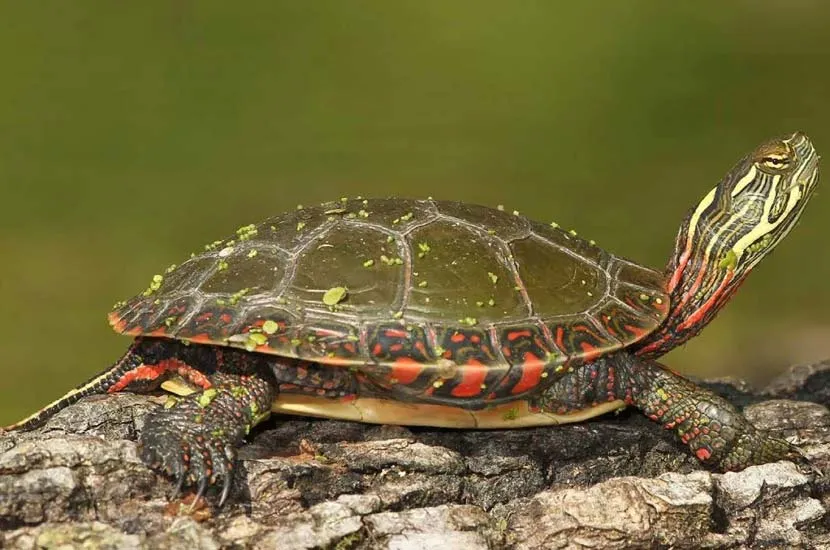
The Painted Turtle has four subspecies, which you can distinguish by their intricate shell markings. However, they all have the same 4 – 10 inches in length, olive or black shells, and yellow or red lining.
The difference is in the shade of each lining and their underbelly (plastron) colors. More details up next!
Color Patterns for Painted Turtle Subspecies
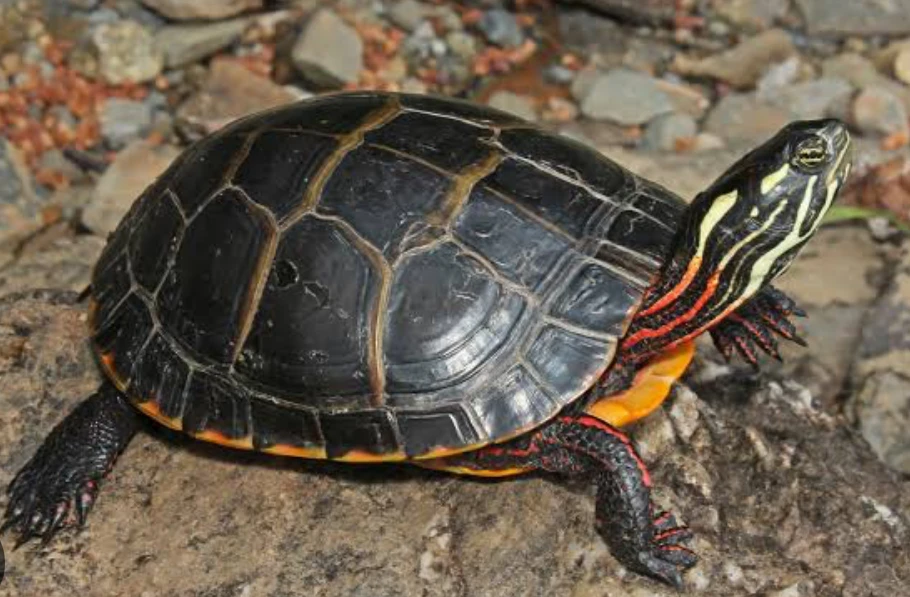
| Species | Markings |
| Eastern (Chrysemys picta picta) | Bright yellow plastron with straight-lined shell scutes |
| Midland (Chrysemys picta marginata) | Dark yellow plastron with irregular blotches instead of lines |
| Southern (Chrysemys picta dorsalis) | Thin red stripe across the shell’s center |
| Western (Chrysemys picta bellii) | Patterned red or orange plastron (most common) |
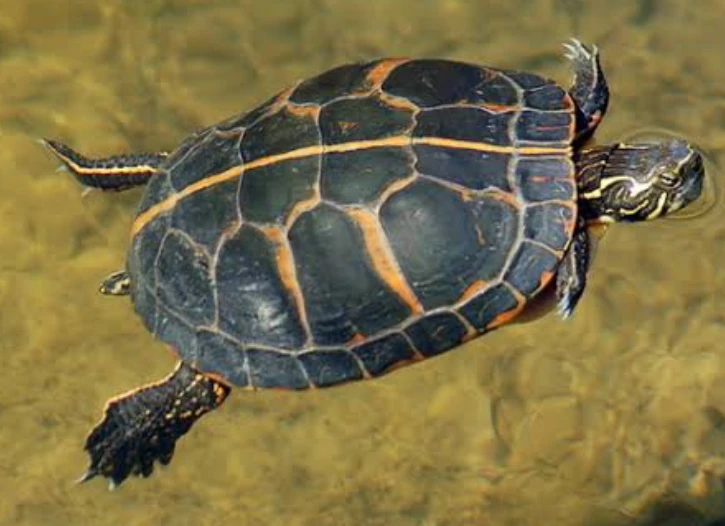
Common Traits for all Chrysemys picta
All Painted Turtle subspecies enjoy basking in dry spots after long periods of swimming in warm water. In the next section we will discuss how to set up their enclosure in detail!
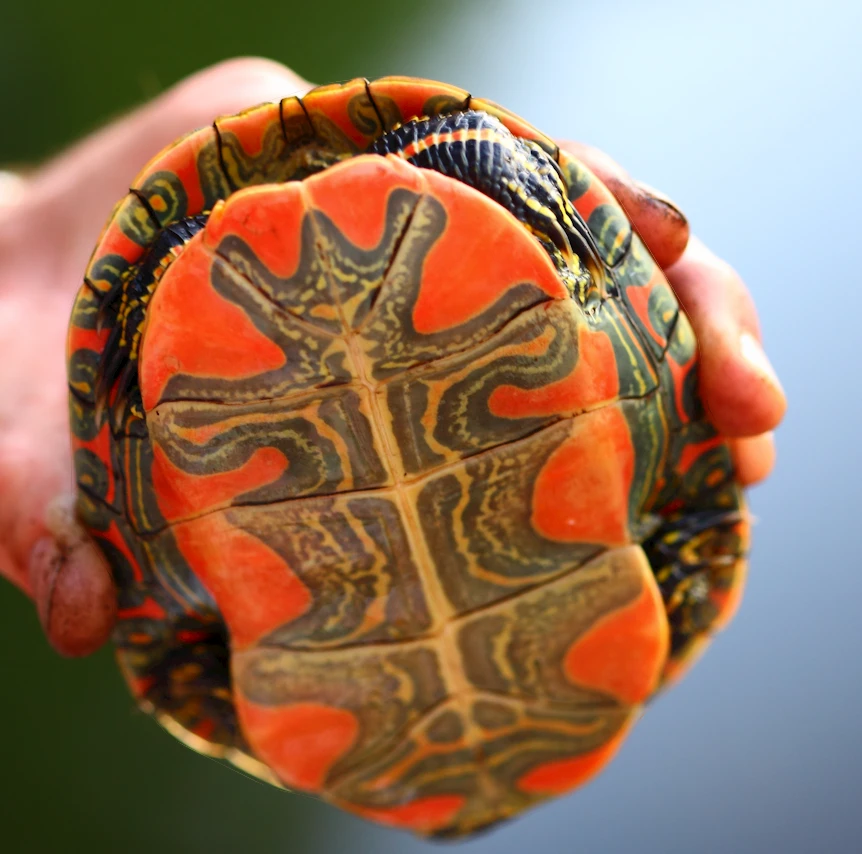
Setting Up the Perfect Habitat for Painted Turtles
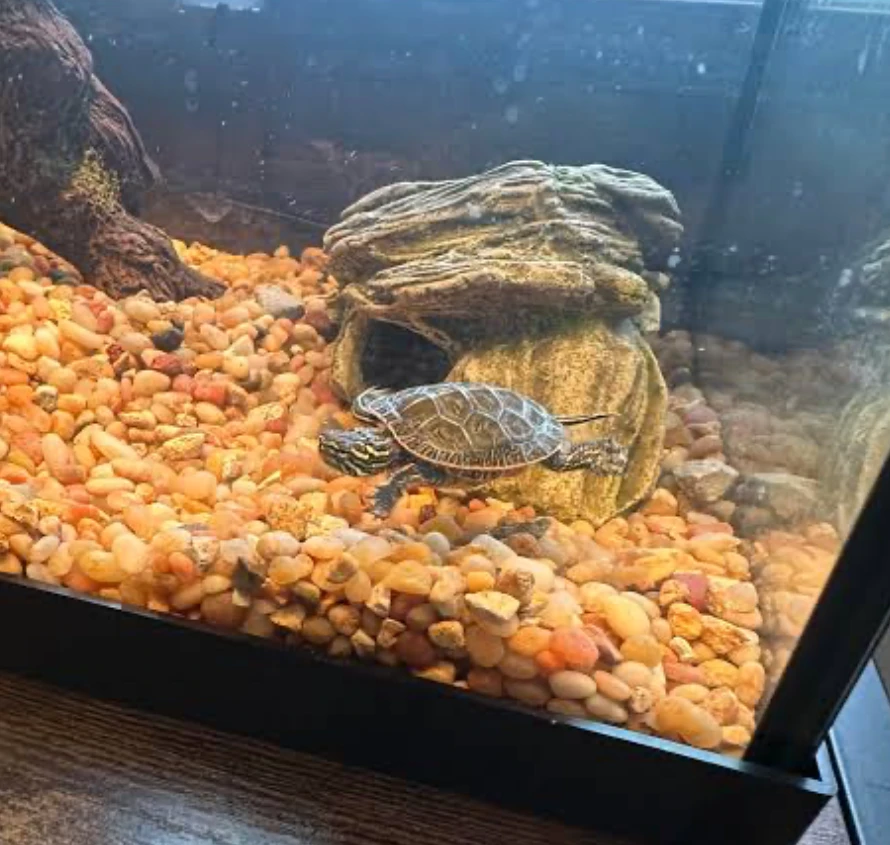
To create a comfortable and healthy living space, provide the following tank size requirements, environmental needs, and water conditions.
Tank Size & Space Needs
The best tank for pet turtles is wide and deep, with enough room for them to swim horizontally and flip when they wish. Tanks containing a minimum of 55 gallons are ideal for single juvenile Painted Turtles, while mature turtles older than a year need at least 75 gallons to thrive.
Land & Water Balance
Remember that turtles are semi-aquatic, so they need a water and land balanced within their environment. Fill the tank with 75% water and measure a depth of at least 1.5 times your pet’s shell length. Then, add a dry platform as the basking spot. You can use driftwood, rocks, or ramp slates as a basking area for semi-aquatic turtles.
There are some creative ways to set your turtle’s tank up, you can even have a floating land area so that your turtle has the entire tank’s water space to enjoy, more on tank set up later! Here are some water parameters to keep in mind:
| Temperature | 75 – 80℉ Water | 85 – 90℉ Basking area |
| pH | 6.0 – 8.0 |
| Hardness | 80 ppm |
Author’s Note: Knowing Why your turtle tank water turns green? (Cause & Fixes) will be useful in the upkeep of your turtle’s enclosure.
Filtration & Maintenance
Remember maintain 85 – 90℉ heating temperatures in the basking area using heat lamps and UVB exposure. This will strengthen their shell health by boosting calcium absorption. Also, add a strong canister filter to keep the water clean because turtles are messy eaters that produce alot of waste.
For a more in-depth guide on choosing the right heat and light combo checkout our post below,
Once you’ve completed your Painted Turtle habitat setup, you must prepare yourself for what to expect from your new pets.
Painted Turtle Behavior: What to Expect from This Active Swimmer
Understanding the Painted Turtle’s personality traits improves your experience with them, regardless of the subspecies. They’re energetic, curious, and territorial in home aquariums.
Activity Levels
You’ll mostly see this pet underwater; its webbed feet make it an excellent swimmer. They’ll also explore their surroundings, from the substrate to the decor, especially in planted aquariums.
Author’s Note: Check out the 8 Best Toys for Pet Turtles to Play With for more ways you can interact with and stimulate your pet turtle.
Basking Habits
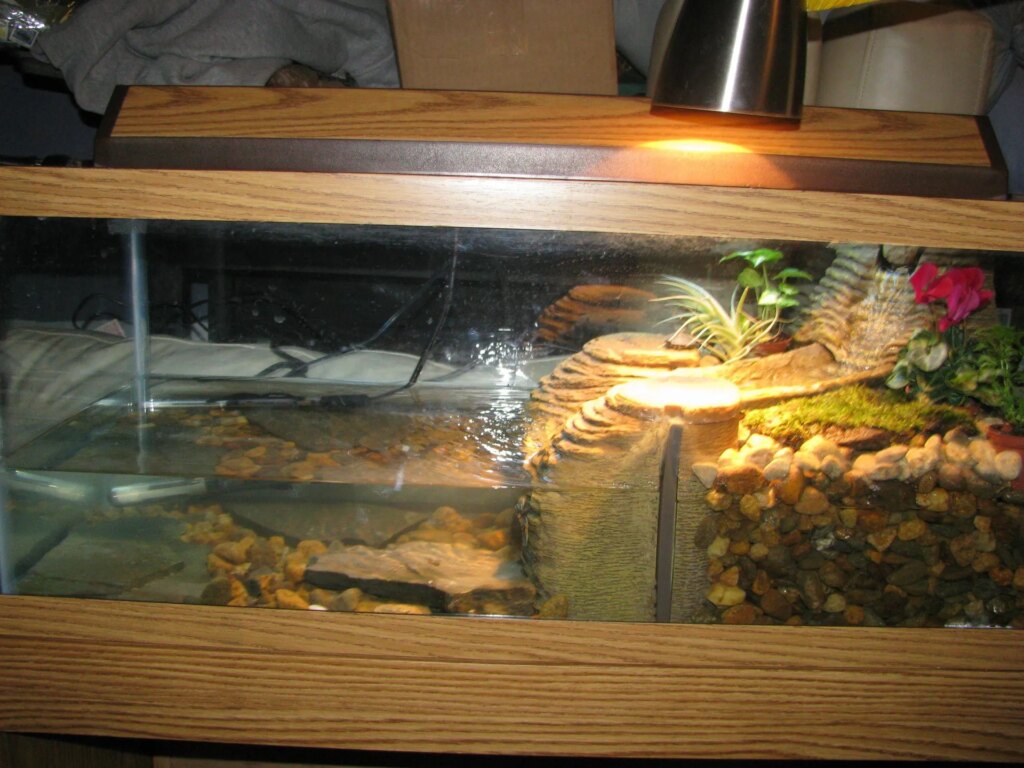
Basking behavior in turtles is a survival trait that helps turtles regulate their body temperature after hours underwater and given they are cold-blooded. To provide Vitamin D3 and other essential functions, turtles need 75 – 100W heat lamps and 5.0 – 10.0 UVB lighting. Ptoper basking areas are very important!
Interaction with Owners
Prepare to bond with these active pet turtles, who can recognize their keepers after a few interactions. They’ll get excited during feeding hours and beg for food when hungry.
Choosing the Right Tank Mates for Painted Turtles
Cohabitation for semi-aquatic turtles hardly works because they do better alone. However, they can live in community tanks under certain conditions. So choosing the right companions, building divided tanks, and providing ways to demark their territories in important, more up next!
Best Companions
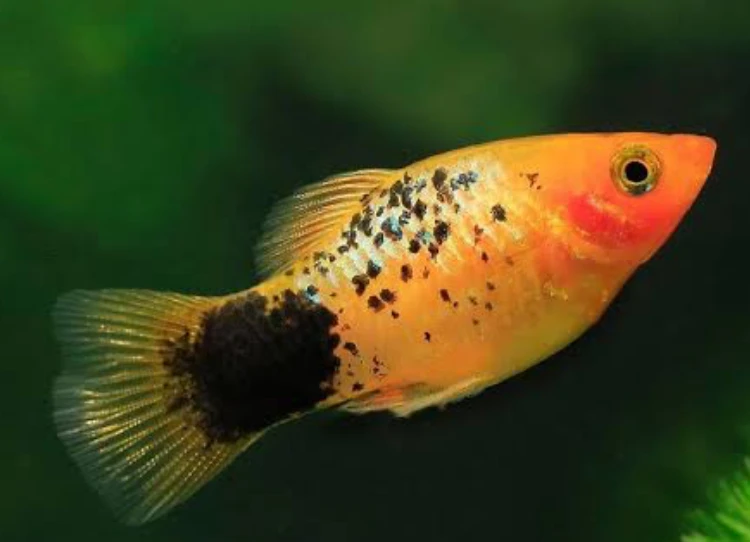
If you must build a community around your Painted Turtle, ensure the other species are larger, peaceful/fast fish or similarly seized turtles from the same family. These are some of the best tank mates for Painted Turtles:
- Gouramis
- Platies
- Mollies
- Corydoras Catfish
Keep in mind that your turtle might catch and eat some of these tankmates.when we say compatible here we mean these tankmates will likely not hurt your pet turtle.
Species to Avoid
Keeping turtles with fish that don’t match their size, temperament, or environmental needs causes stress or predation. So avoid adding small fish, amphibians, or other aggressive turtles to the community.
Solo vs. Group Living
For your pet’s long-term health, minimizing stressful triggers like making them live with other tank mates is best. So, solo-living is the best option for Painted Turtles.
Feeding Guide: What Do Painted Turtles Eat?
Feeding semi-aquatic turtles is the best way to bond, and it’s easy, too, since they’re omnivorous. Turtles also need balanced nutrition for optimal health and longevity.
Dietary Needs
Painted Turtles prefer animal protein and plant matter, but their needs change with age. Hatchlings and juveniles less than a year old need 80% protein and 20% veggies, while older turtles from one year and above become herbivorous with 75% plants and 25% protein. So, your pet turtles’ diet and nutrition depend on you.
Author’s Note: If you are struggling with a turtle that just won’t eat check out our post on the 8 Reasons Why Your Turtle Won’t Eat (Tips & Fixes) for causes and fixes.
Best Foods
Some of the best foods for Painted Turtles are high-protein commercial turtle pellets; insects like crickets, shrimp, and bloodworms; leafy greens, aquatic greens, and occasional feeder fish with fruits like strawberries and melons.
Author’s Note: Check out our Complete Guide To Turtle Food: What To Feed And Why It Matters for detailed food recommendations!
Feeding Schedule
Juvenile and adult feeding routines also differ, as do their diets. Hatchlings should be fed daily, juveniles once every two days, and adults twice to thrice weekly.
How to Breed Painted Turtles Successfully
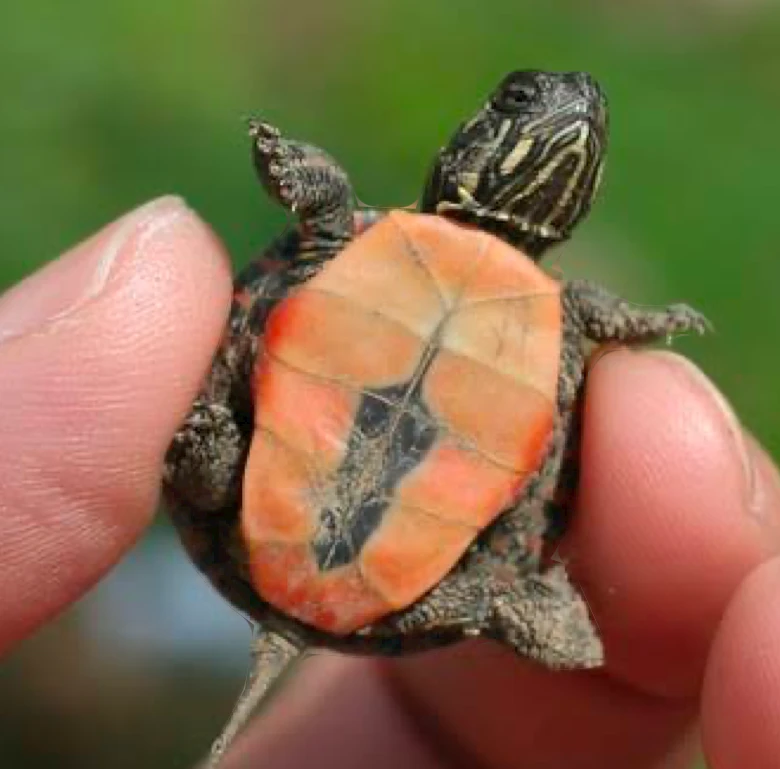
Successfully breeding Painted Turtles outside their natural habitat depends on your understanding of the breeding process, nesting requirements, and hatchling care. It’s okay if you’re a beginner here since we have the answers.
Mating Behavior
The Painted Turtle breeders start with mating behavior, where the male touches the female’s face with his long front claw. She agrees to the call by swimming towards him and allowing him to mount her shell, after which she swims towards the nesting area.
Egg Laying & Incubation
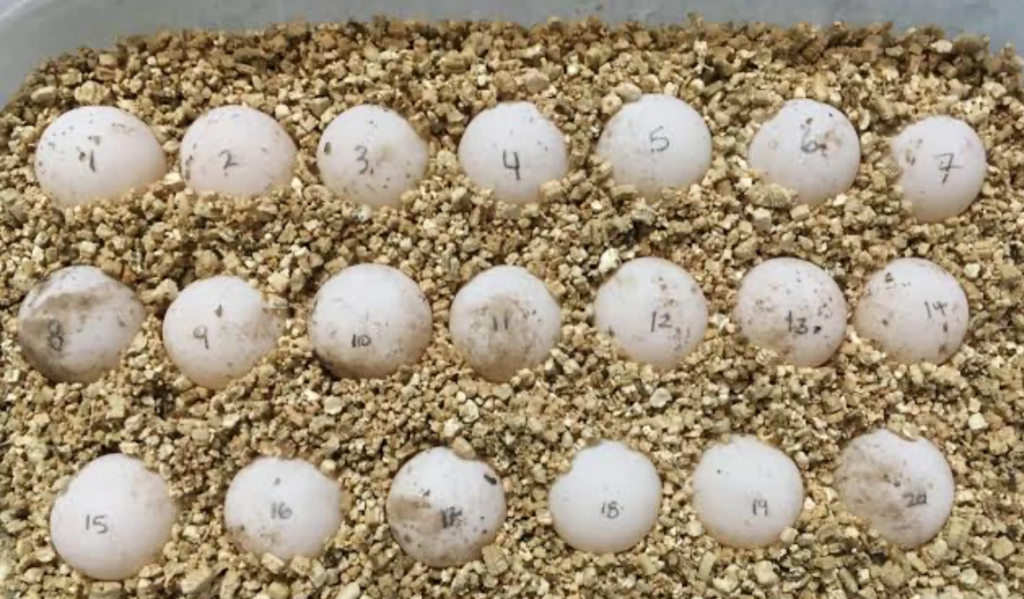
A comfortable nesting area for your female Painted Turtle must be a box with 6 – 8 inches deep sandy soil mix to prevent her from becoming egg-bound. Once she lays her eggs, turtle egg care and incubation become your responsibility.
Collect the eggs into an incubator with 77 – 87℉ heat. To get both sexes, you must separate the eggs into two incubators. Use cooler temperatures for male hatchlings, while warmer temperatures produce female hatchlings.
Then, wait 65 – 80 days for them to hatch.
Hatchling Care
Your responsibility also includes raising hatchling turtles in a controlled environment. Ensure the tank’s water is shallow so they can easily reach the basking spot. Feed them high-protein and calcium-rich food for healthy shell and bone development.
Common Health Issues & Preventative Care for Painted Turtles
Common diseases in pet turtles, such as shell problems, respiratory and parasite infections, are the effects of poor health and tank maintenance. This guide helps you identify the symptoms for early detection and quick treatment if you miss any of the best prevention practices.
Shell Problems
Lack of Vitamin D3 and Calcium absorption causes shell problems like pyramiding and weak bones in the developing year. With adults, the biggest risk is shell rot from untreated cracks and poor water quality.
Shell rot prevention and treatment start with providing optimal habitat conditions with a balanced water-land ratio. Scroll up for details.
Respiratory Infections
Set the water and basking area temperature to optimal levels because low temperatures and poor water quality can lead to illnesses such as hypothermia, vitamin deficiency, and weakness.
Parasites & Infections
Daily observation of your pets aids in the early detection of symptoms like laziness to swim, staying upside down, immobility, and any other abnormalities. Typically, these are signs of parasite or fungal infections caused by poor water quality and weak immunity from a poor diet.
The best treatment is to improve your Painted Turtle’s diet and make a large water change for optimal conditions. Meanwhile, visit a vet to determine if your pet needs an antifungal, antibacterial, or anti-parasite cream.
Scroll up for the best Painted Turtle health care tips, from their ideal environment to diet.
Lifespan & Long-Term Care: Ensuring a Healthy Turtle for Decades
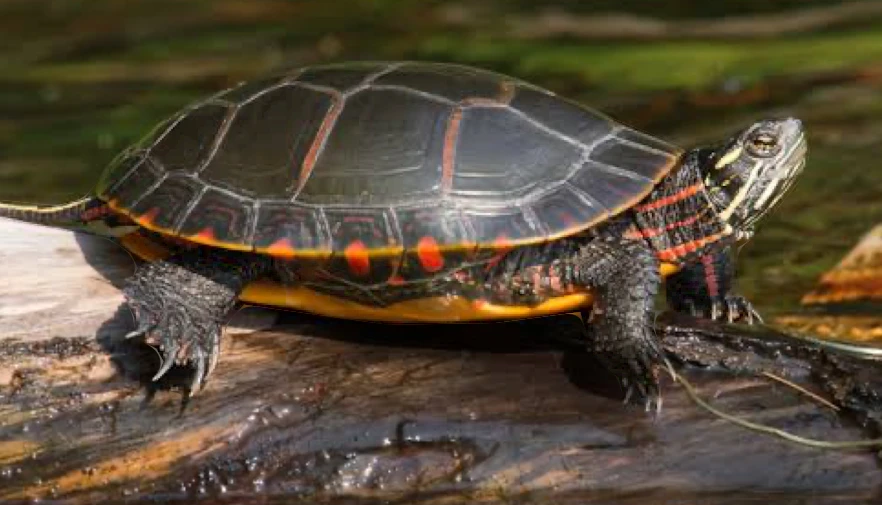
Keeping turtles healthy in captivity depends on how well you provide routine care and proper husbandry. Use this long-term turtle care guide to guarantee they live between 20 – 30 years in good health.
Tank Upgrades
If you breed a hatchling or juvenile, prepare a larger 75 – 100 gallon tank for their matured size. Outgrowing small tanks is a normal part of their life, and you must accommodate it to prevent stunted growth.
Dietary Adjustments Over Time
Change their diet from protein-focused to plant-rich as they age. See details above.
Routine Maintenance
Make regular water changes, use external filter cleaning, and practice periodic shell inspections to ensure your pet’s living in a healthy environment. Following this guide is the best way to maximize your Painted turtle’s lifespan.
Conclusion
Well done on reaching the end of this review. You can now see that owning a Painted Turtle is a serious but enjoyable commitment.
It’s one of the best turtle species for home aquariums because of its striking appearance, engaging behaviors, and adaptability in various settings. However, these qualities can only be enjoyed after providing a proper tank setup, appropriate diet, and community mates.
If you’re ready for a long-term commitment to turtle care, this is the right place to start. Scroll to the top and take notes, then let’s hear how helpful they were to you in the comment box below.

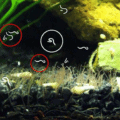
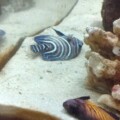
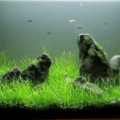
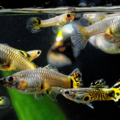
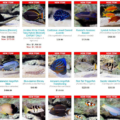
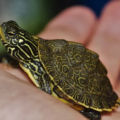
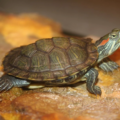
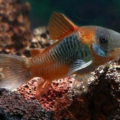
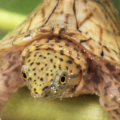
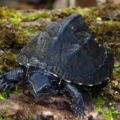
3 thoughts on “Painted Turtle (Chrysemys picta): A Colorful & Hardy Semi-Aquatic Pet”